This is Rachel. If you haven’t already made her acquaintance, she’s something of a hen starlet on my Facebook page where she is featured daily in all her fluffy cuteness. Rachel is a bantam frizzled Cochin. Cochin is her breed, bantam describes her miniature size and frizzle describes her unusual feathers. Genetics cause frizzled feathers to grow out and curl away from the body instead of growing flat and smooth following the body contour. Frizzle is not a breed, it is a genetically programmed feather type.
Cochin is her breed, bantam describes her miniature size and frizzle describes her unusual feathers.FACTS ABOUT FRIZZLED CHICKENS:
- Frizzles are most commonly found in the following breeds: Polish, Cochin, Plymouth Rock, Japanese and Silkies (Silkie frizzles are referred to as Sizzles)
- Frizzled feathers curl out and away from the skin instead of laying flat against it.
- Frizzles cannot fly and may find it difficult to roost if the roosts are positioned too high above the floor.
Frizzled feathers provide less protection from the cold than smooth feathers as it is difficult to trap warm air against their bodies with backwards-facing feathers. Frizzled genes are dominant. A smooth-feathered bird bred to a frizzled bird will result in 25% of the chicks possessing frizzled feathers.
Bantam Cochin Frizzles Monica, Rachel & Phoebe at 6 weeks old.Breeding a frizzled bird to another frizzled bird is undesirable due to the chance that the mating may produce “curlies,” an over-frizzled bird with feathers that are weak, brittle and break easily. (think: chicken with a really bad perm)
White bantam Cochin chicks Female with frizzled feathers on left. Male on right.



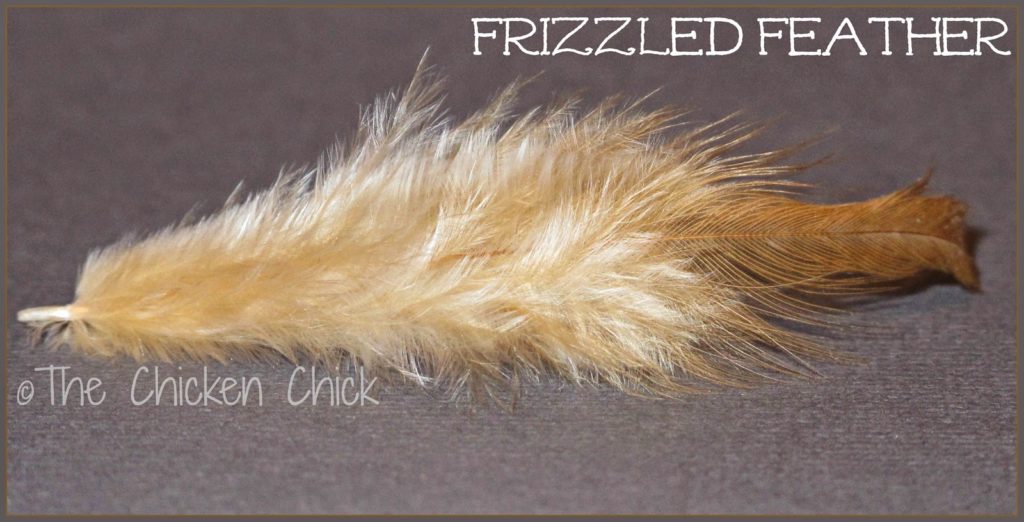
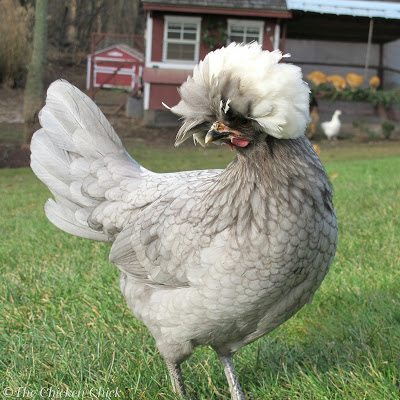
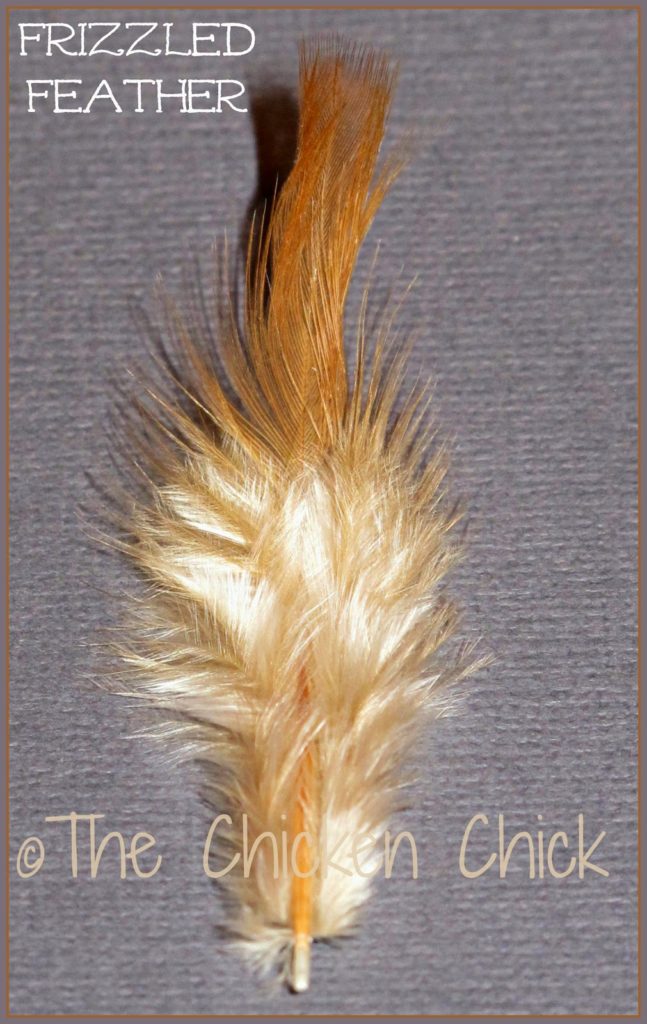
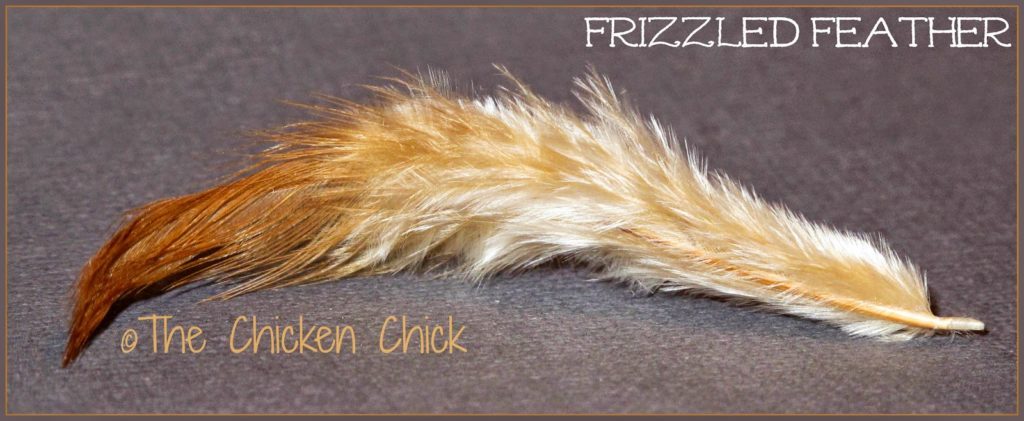
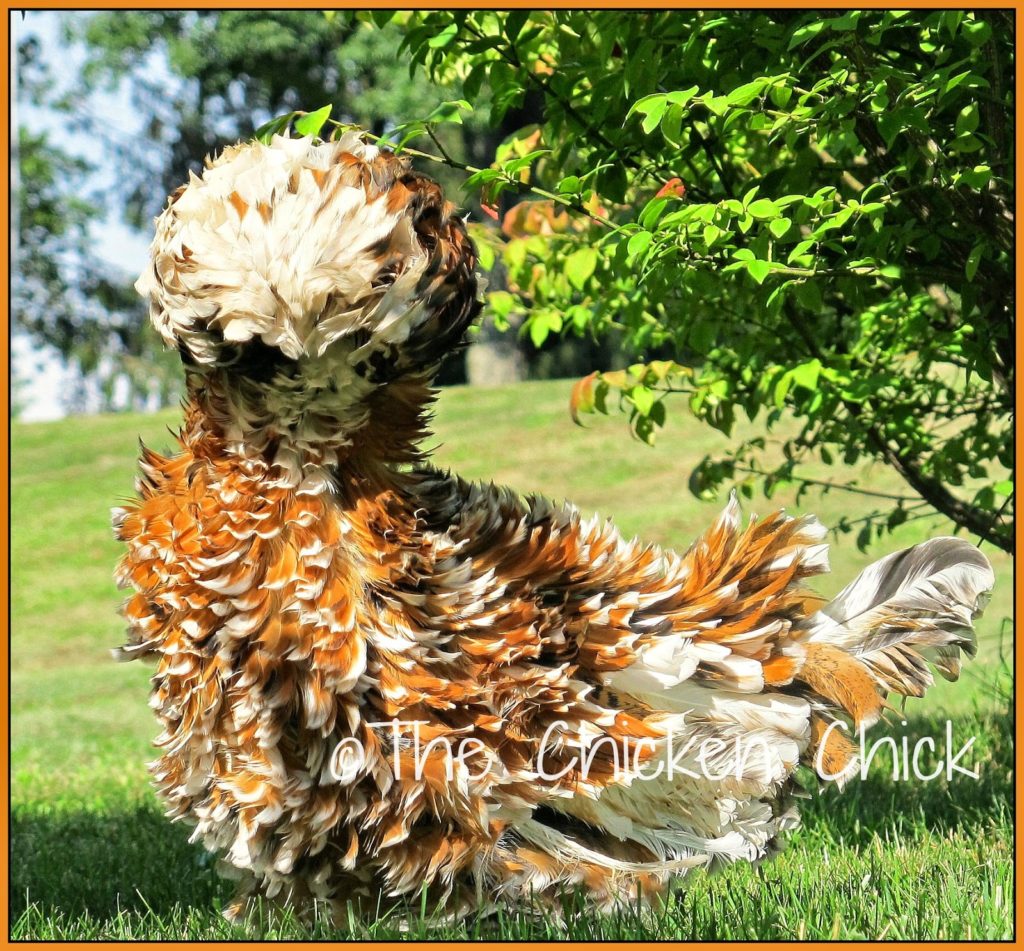
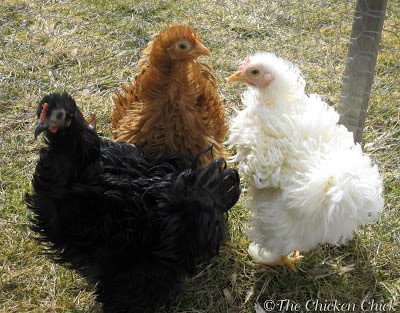
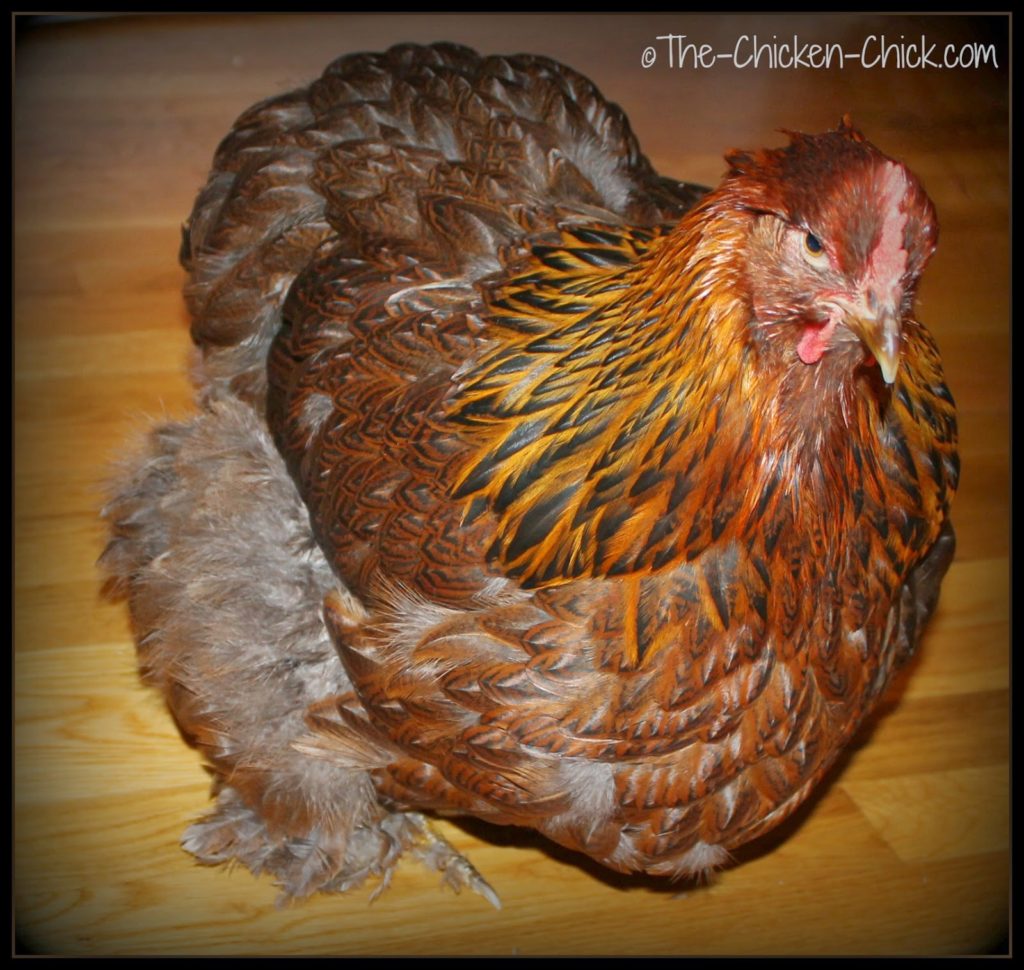
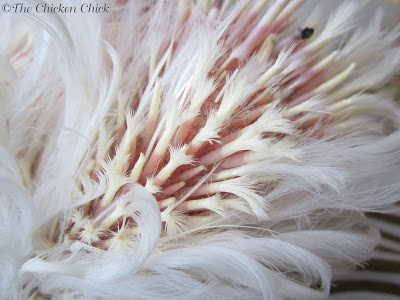
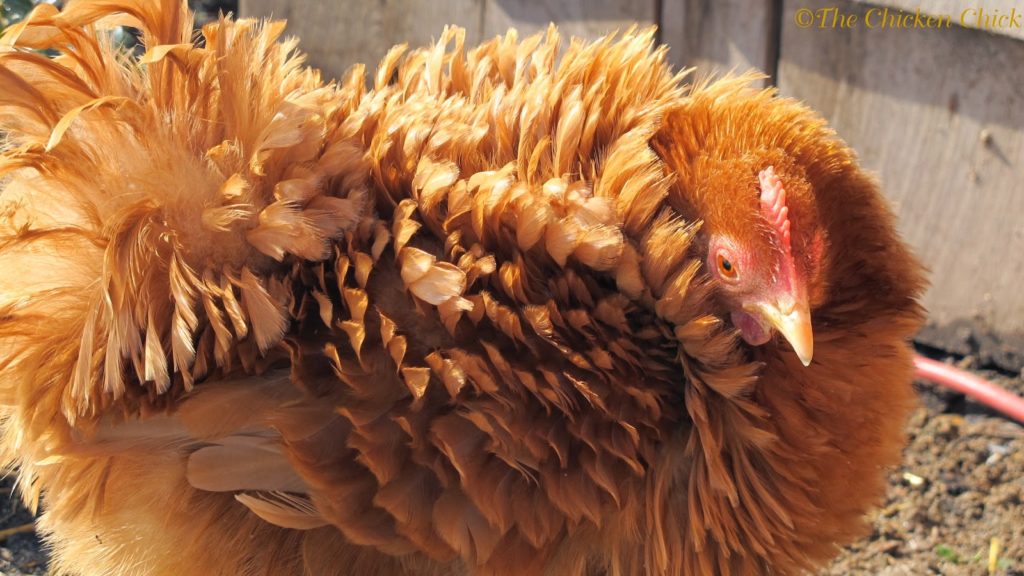



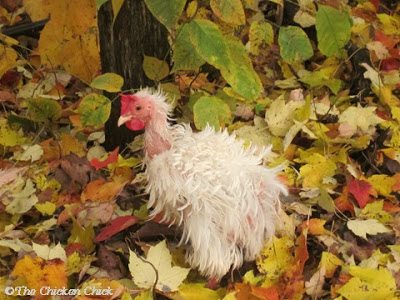
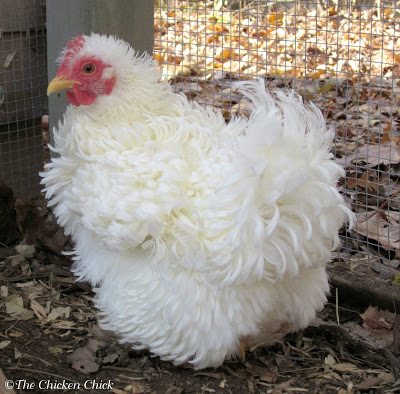
























I love reading about your chickens. Thank you for the chance to win the Vetericyn or the treats. I used the canine hot spot Vetericyn on my Golden Retriever with fantastic results! It worked better than the prescription I tried first.
I have frizzles in western WA. They seem to do fine here. Would love to win the vetricyn. Chickies think the treats would be more fun.
I have always wanted a frizzle! They are adorable!
I have three frizzles,one is a polish frizzle his girls seem to be trying to pull all his feathers off his head now they have started on tail feathers,doing what I can with blu- kote,just started a product called pick-no-more last night. Love your blog.
Thank you for the info. Could you tell me about a reliable place to order Frizzle chicks? Also, do you have to keep Rachel inside in the winter or accommodate her in any other way? I live in W. Michigan and would not want to get Frizzles and have them suffer in any way. Thank you!